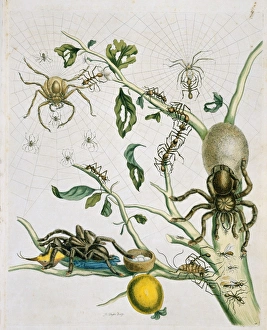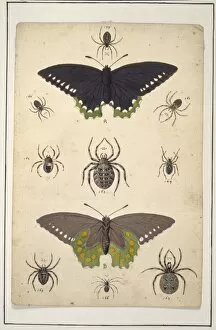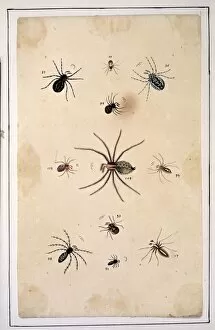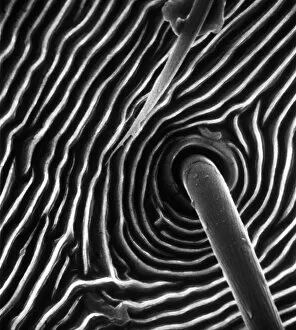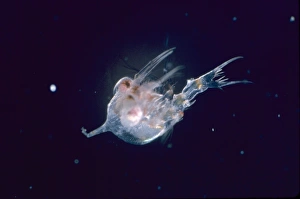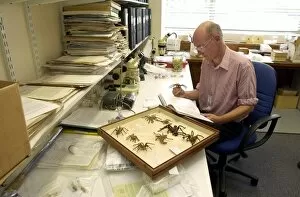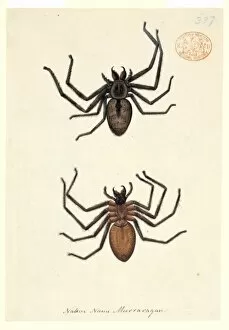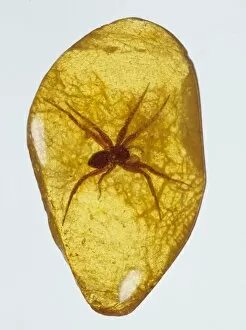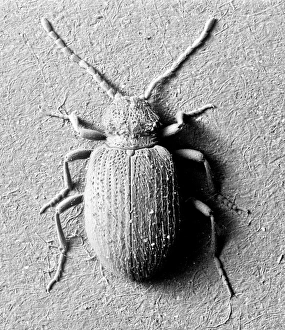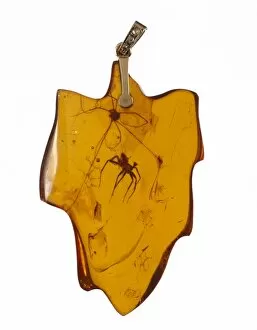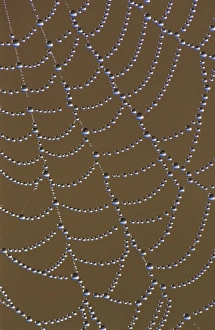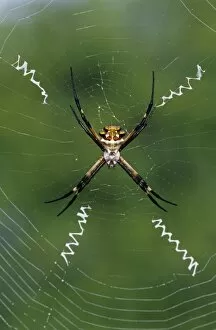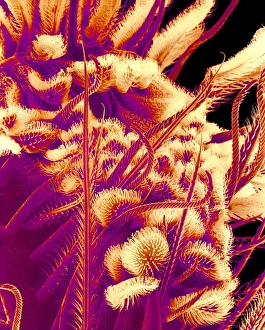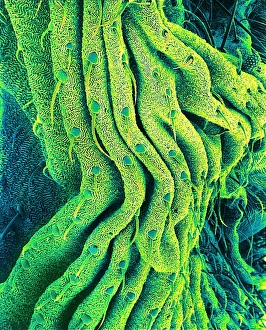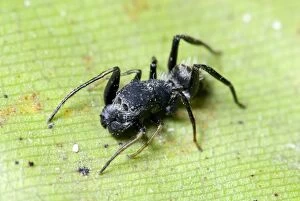Araneae Collection (page 5)
Araneae, the order of spiders, encompasses a diverse range of species found across the globe
All Professionally Made to Order for Quick Shipping
Araneae, the order of spiders, encompasses a diverse range of species found across the globe. From the Heteropoda venatoria or huntsman spider with its impressive size and agility to the tiny Oligonychus ununguis, also known as the red spider mite, these arachnids display remarkable adaptability. In tropical regions like Tambopata Nature Reserve in Peru's Madre de Dios Region, one can encounter fascinating creatures such as the Brazilian Wandering Spider or Banana Spider from the Phoneutria genus. These venomous spiders belong to the Ctenidae family and are known for their potent bite. Closer to home in Burgenland, Austria, we find another intriguing member - Argiope bruennichi or Orb-weaving Spider. Its distinctive yellow and black markings make it easily recognizable among other European garden spiders like Araneus diadematus (Cross spider) that inhabit our gardens. Spiders often share their habitats with various insects and even birds. A guava tree adorned with delicate webs becomes a playground for these skilled predators seeking prey, and is not uncommon to witness an intricate dance between spiders, insects, and hummingbirds amidst nature's beauty. Venturing into Venezuela's lush landscapes reveals yet another marvel - Avicularia metallica or Metallic White-toed Tarantula taking refuge in a thatched roof. Their striking blue coloration captivates observers while reminding us of nature's endless surprises. The scientific codes DDE-90028483, DDE-90028481, DDE-90028480 along with DDE-90027969 may refer to specific studies or research projects related to Araneae; however further context is needed to fully understand their significance within this captivating world of eight-legged wonders.

